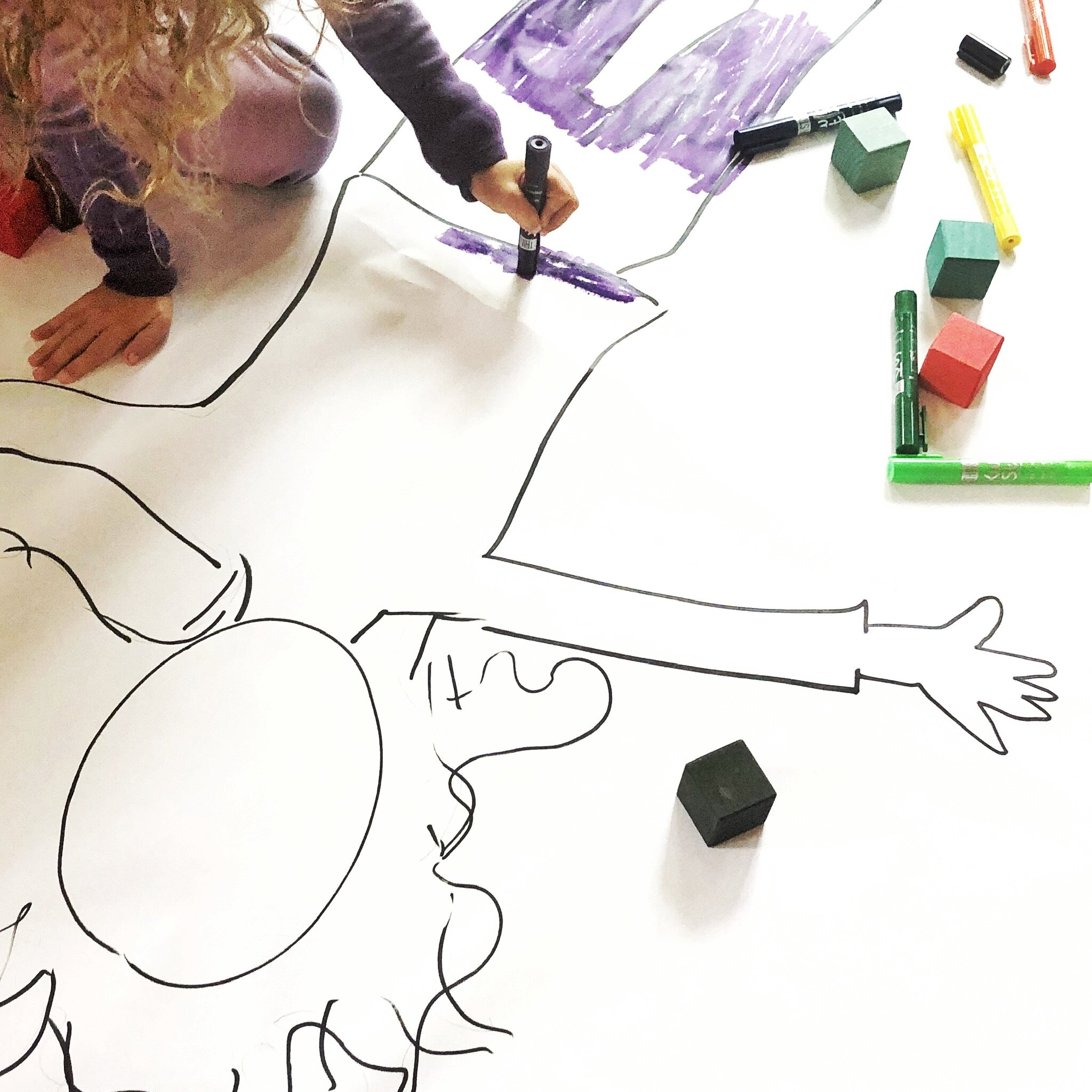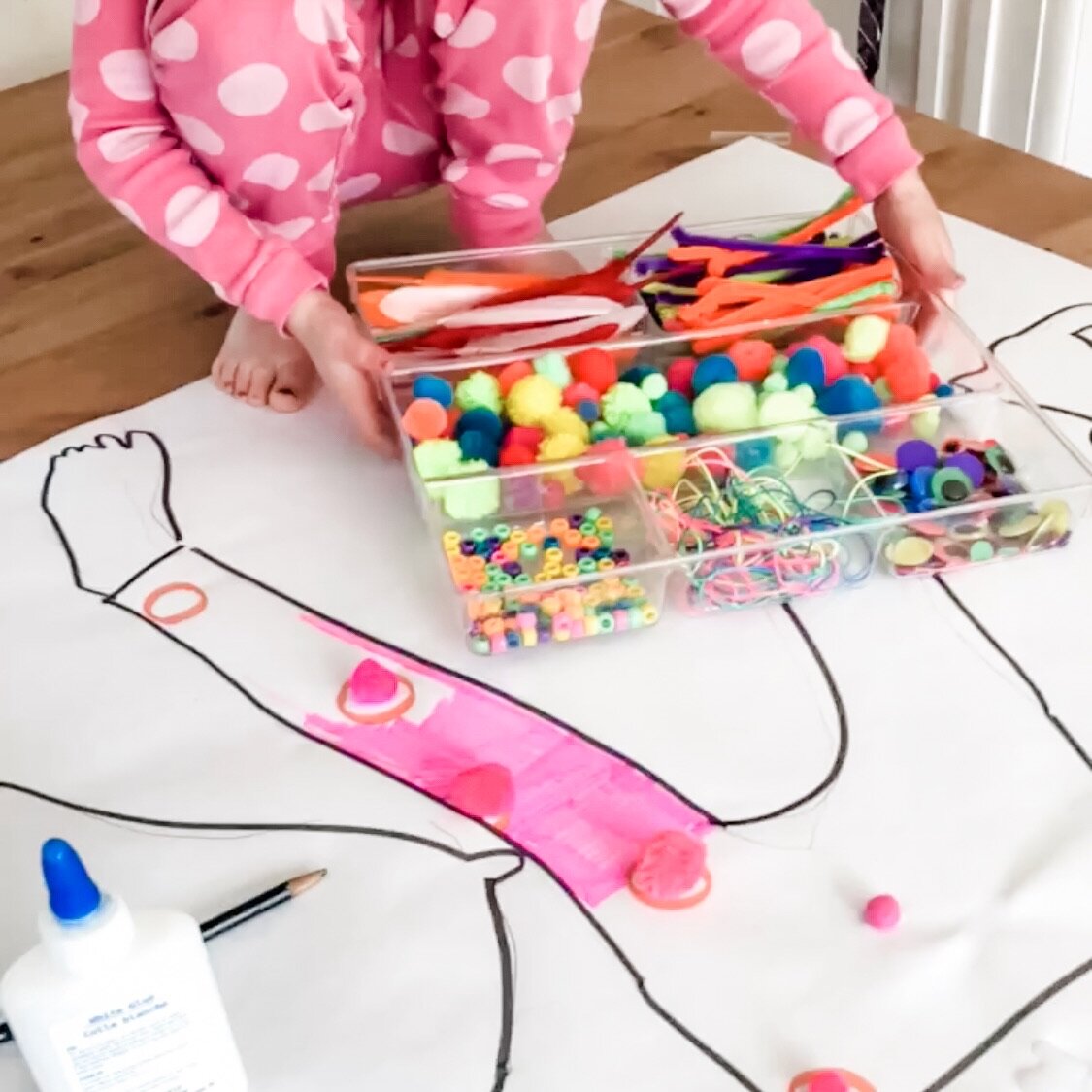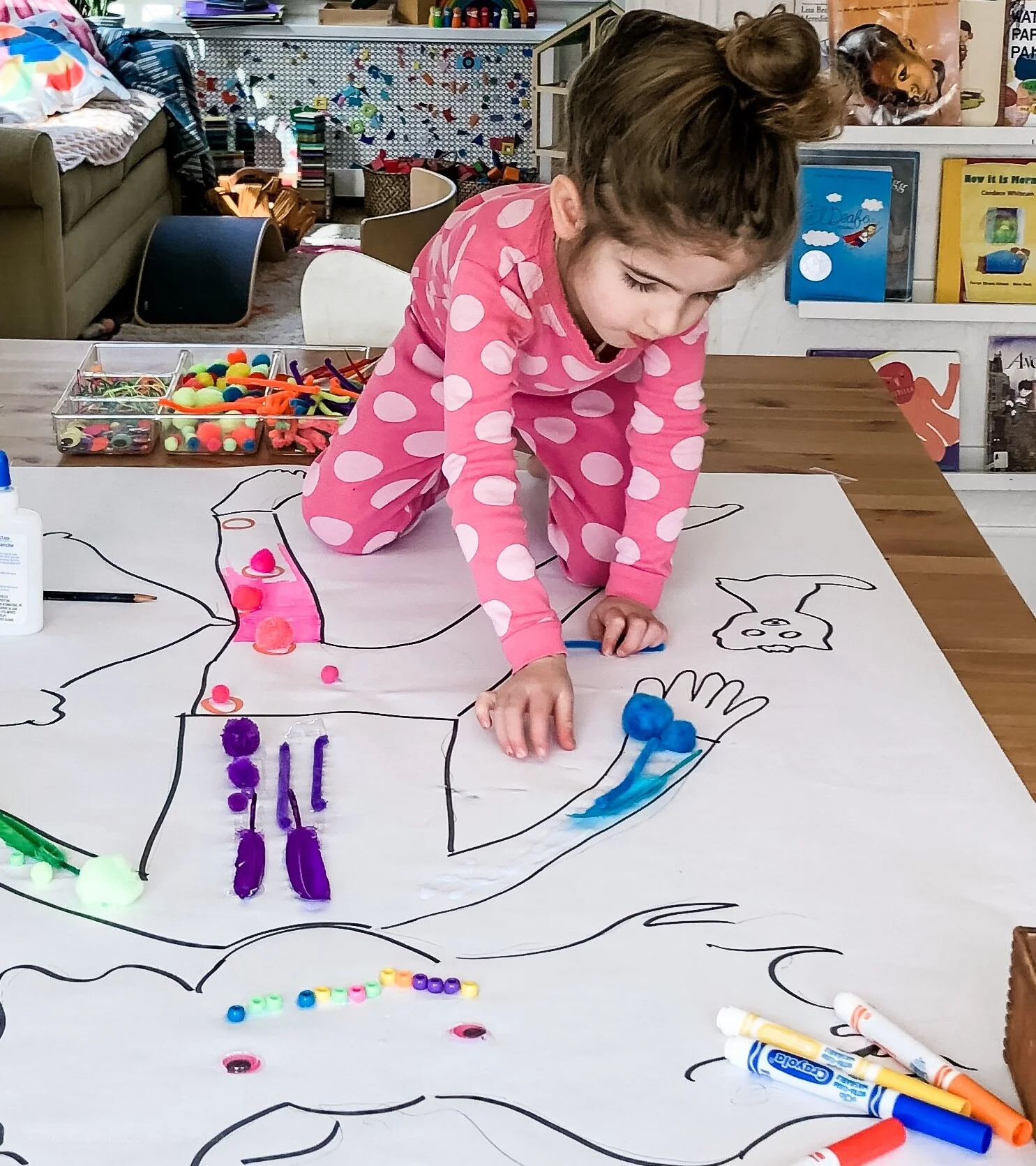Body Portraits Activity for Kids
/What you need:
Collage materials.
You can do this with anything! Get creative and think outside the box.
No need to go out and buy supplies. Use old fabric scraps, torn up magazines, beads, feathers, string bits. Really anything you have on hand. I find that it is useful to sort the materials in a tray like THIS ONE, but you could also feel free to spread it all out on a big cookie sheet.
Roll paper or butcher paper
Glue. Regular squeezable school glue or even a glue stick should work.
Scissors
Marker and/or a pencil
Here are some language prompts to get them going:
“What materials will you choose to create a face?”
“You have polka dots on your shirt today. Will you use beads or fabric to show that on your body tracing?”
A body tracing activity can be as simple as a chalk outline on the sidewalk or an elaborate, large scale collage.
However you decide to implement this activity, JUST DO IT!
Children of all ages love to get busy making body tracings….
But did you know that this activity has a lot of social and emotional benefits?
BEFORE YOU GET STARTED….
Bending down close to a child and tracing the outline of their body can be a very intimate experience. As a teacher, I would not choose this as a beginning of the year activity. Before I would do this kind of project, I would want to build up a strong rapport with the children and get to know them well. For some children, this kind of up-close body proximity can feel very intimidating. When that is the case, it is a good idea to let the child trace YOU first. Still too much? Have them trace a lovey or a doll, and do the activity that way. They might need to have this once-removed before getting to work on a large scale portrait of themselves.
For the shy or introverted child, seeing themselves on such a large scale can be powerful!
I suggest doing this activity multiple times over the course of the year because children really grow and develop into this kind of self-reflection. While they might not be very invested in making the portrait in November, by May you might see an entirely different creation.
Tip: Have a full-body mirror nearby when the children are working.
Body tracing is also a wonderful way to have older children work collaboratively.
They learn to read body and facial cues as they move closer and further away from a friend or classmate as they trace or help the cut out the body tracing. They also use a lot of language as the navigate the space between them.
3 ways that you can do a body tracing activity at home or at school…
BODY TRACING WITH PAINT STICKS
What you need:
Quick-dry paint sticks. We love these from Kwik Stix. They dry in 90 seconds making the activity a lot less messy than when you use traditional paint. They also glide on very smoothly so your child won’t feel frustrated covering a large area of paper.
Large sheet of paper. We love this roll paper. We use it daily.
Scissors for cutting out the final product.
A thick black marker for tracing the outline of the body.
How to:
Have your child lie down on the floor on top of the paper and strike a pose. Don’t be afraid to get silly!
Trace your child, being sure to get in between those fingers. I love to trace the hair and clothing outline as well. It makes it much more fun.
Because they are likely to wiggle, use pencil to trace and then go over the pencil with black marker. When you are all finished tracing hand over those paint sticks and let your child create.
Here are some language prompts to get them going:
“I notice you are wearing a purple shirt today. Will you paint your shirt purple or will you imagine a completely different shirt?”
“You are smiling so big right now. I wonder what kind of face you will paint on your body tracing?”
BODY TRACING WITH TEMPRA PAINTS
What you need:
Tempera paint. We love this washable paint from Crayola
Large sheet of paper or butcher paper
Scissors for cutting out the final product
A pencil and/or thick black marker for tracing the outline
Here are some language prompts to get them going:
“You are wearing light blue pants today. How can you mix the paint colors to make light blue?”
“Will you paint your hair big and curly or flat and straight? What kind of lines will you use to create that?”
COLLAGE BODY TRACING:
When your body tracing is complete, cut it out and display it prominently!
Large scale art is a BIG job for little people. Have fun and enjoy the process.
Shop this post:












